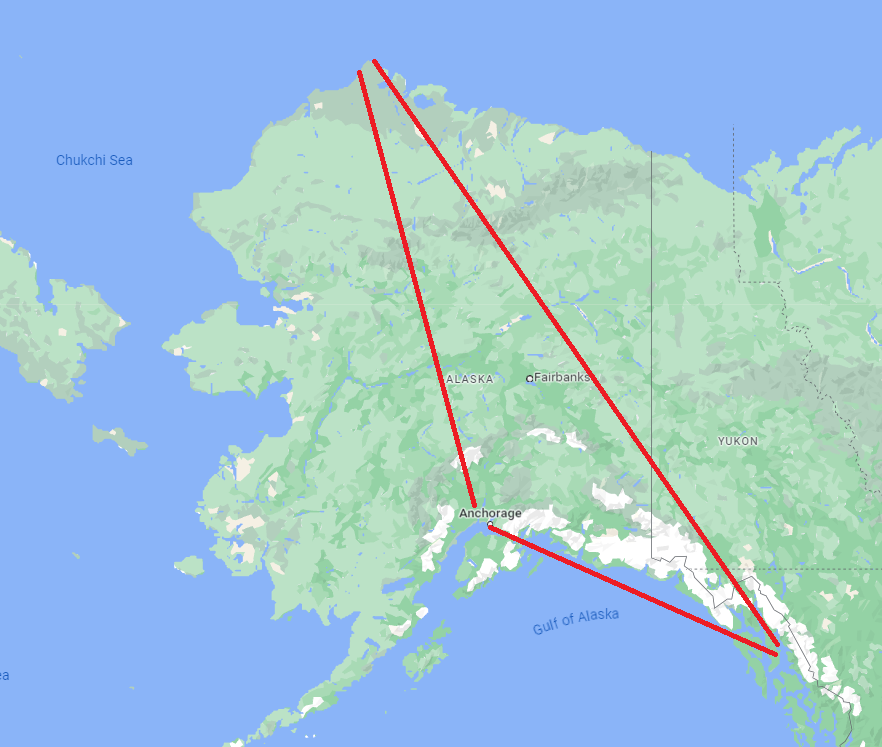The over-hyped perils of the Bermuda Triangle have become the stuff of modern-day folklore. Fewer people, however, know about the so-called Alaska Triangle, said to be the location of more unsolved missing person cases than anywhere else in the world.
The Alaska Triangle is a loosely defined area in the state between the three points of Anchorage and Juneau in the south, and Utqiagvik, a small remote city found on the northern coast.
It’s estimated that well over 20,000 people have vanished in this vast swath of land since the early 1970s. Considering how sparsely populated the area is, that’s a shockingly high rate. For the whole of Alaska, it works out to be an average of 2,250 people disappearing every year, twice the national average, many of which appear to occur in this triangle of ultra-rugged land.
Some of the highest-profile people to go missing in the Alaska Triangle are Thomas Hale Boggs Sr, who was serving as the US House Majority Leader, and Nick Begich, an Alaska Congressman. The two politicians disappeared on October 16, 1972, when flying in a light aircraft from Anchorage to Juneau alongside Begich’s aide, Russell Brown, and the pilot, Don Jonz.
The Alaska Triangle is roughly between the three points of Anchorage and Juneau in the south, and Utqiagvik, a small remote city found on the northern coast.
Image credit: Google Maps, edited by IFLScience.
A massive search effort was launched to find the four missing people, but the bodies nor the plane were ever discovered. Given these mysterious circumstances, the incident has sparked a number of conspiracy theories. Boggs was a member of the Warren Commission, the official body set up to investigate the assassination of JFK, and reportedly disagreed with many of the group’s findings.
Another prominent case was Gary Frank Sotherden, a 25-year-old New Yorker who traveled to the Alaskan wilderness in the mid-1970s to go hunting, but he never returned home. In the summer of 1997, a hunter found a human skull along the Porcupine River in northeastern Alaska, from which DNA was recovered in 2022. State troopers later concluded that the skull belonged to Sotherden who most likely died after being mauled by a bear.
Instead of mystical forces and otherworldly explanations, it’s self-evident that the remote patches of Alaska are a very easy place to disappear within. There are more caribou than people in Alaska. As the most sparsely populated state, just 730,000 people live in Alaska, meaning just 1/20th of 1 percent of the state is inhabited.
The rest is relatively untouched wilderness, complete with ragged mountain ranges, glaciers, bitterly cold weather, millions of lakes, countless crevasses, vast valleys, and lots of bears.
Some out-there theories suggest the Alaska Triangle is the site of unusual magnetic activity or a high number of extraterrestrial alien visitors. However, simpler and more likely explanations are easily at hand: your chances of going missing in a vast and empty land full of natural dangers are relatively high.
Source Link: Why Over 20,000 People Have Vanished In "The Alaska Triangle"
